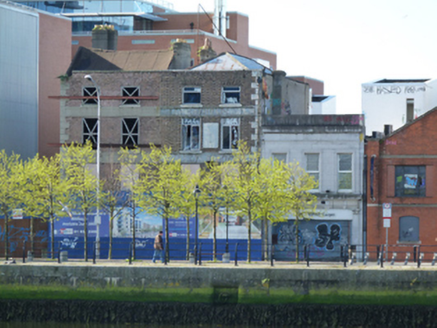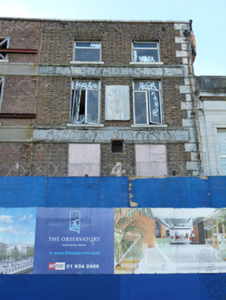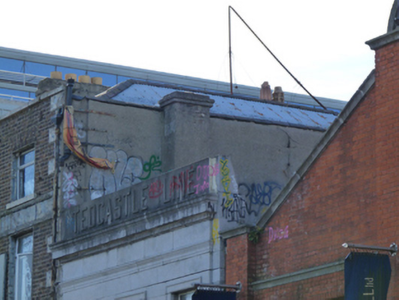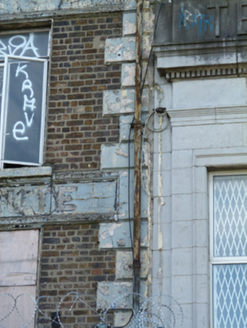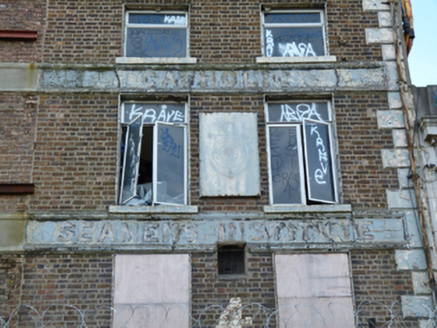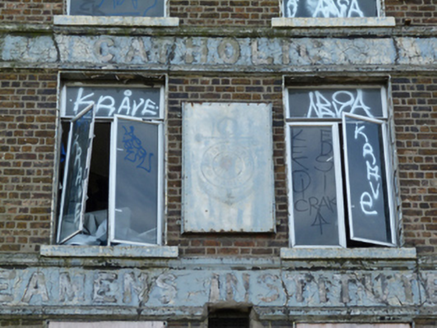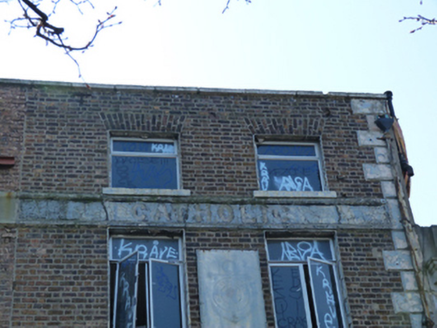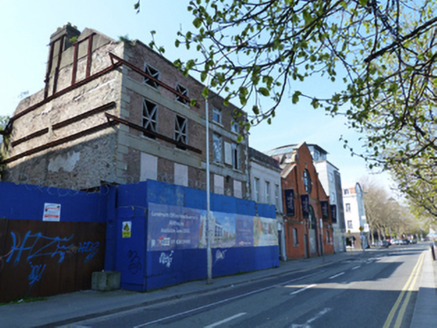Survey Data
Reg No
50020472
Rating
Regional
Categories of Special Interest
Architectural, Social
Previous Name
Catholic Seamen’s Institute
Original Use
House
Historical Use
Hostel (charitable)
Date
1815 - 1835
Coordinates
316884, 234320
Date Recorded
22/04/2015
Date Updated
--/--/--
Description
Terraced two-bay four-storey former house, built c.1825. Later in use as charitable institute, now disused. Hipped corrugated-iron roof, set perpendicular to street, hidden behind brick parapet with granite coping, rendered chimneystacks. Brown brick walls, laid in Flemish bond, having render quoins to west end and rendered platbands with some visible lettering to first and second floors. Square-headed window openings having raised render reveals, masonry sills and replacement timber casement windows. Located on south side of Sir John Rogerson’s Quay.
Appraisal
Once part of a larger group of late Georgian merchant houses, now only this and the neighbouring building to the west survive. It later functioned as the Catholic Seamen’s Institute, founded by Saint Vincent de Paul. The vestiges of its sign remain visible on the fasciae. While much of the early fabric has been lost, the building retains its traditional form and character. The render facade details add tonal and textural variation to the brick walls. The building is a reminder of the mercantile character of the waterfront along Sir John Rogerson’s Quay, laid out in the early eighteenth century. John Rogerson, a city council member and Lord Mayor of Dublin, owned land in the area from 1713. By the late 1720 the quay wall extended from Creighton Street to Lime Street and is depicted on Brooking’s map of 1728, showing gable-fronted buildings lining the quay. Rocque’s map of 1756 depicts a number of small buildings and undeveloped plots occupied by timber and store yards. Following the development of the Grand Canal Docks the area was characterised by mixed domestic and commercial buildings and warehousing.
